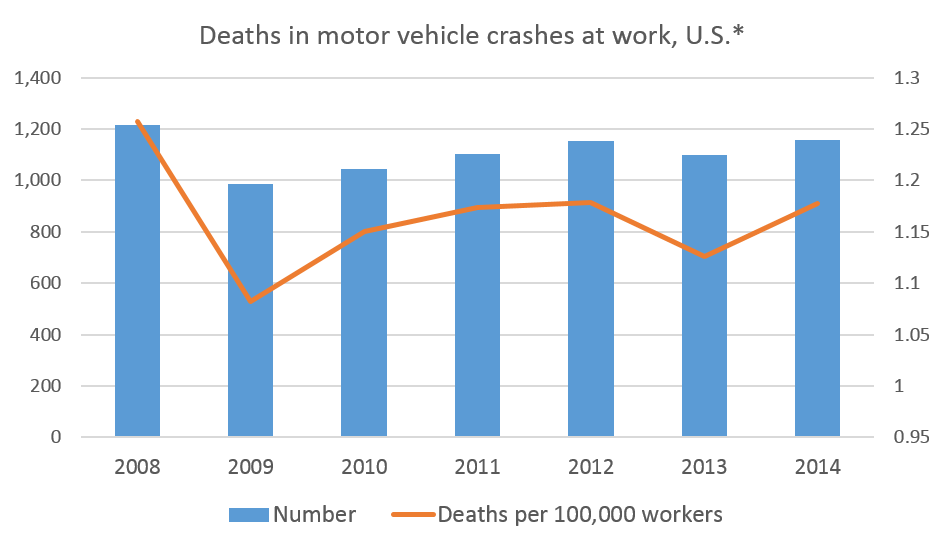Keeping Workers Safe on the Road
Posted on byReducing deaths due to motor vehicle crashes has been one of the greatest public health achievements of the last 50 years. In 2014, the rate of crash deaths in the United States, based on miles driven, was one-fifth the rate for 1966. And, the number of deaths decreased from 50,894 in 1966 to 32,675 in 2014. But, as CDC Vital Signs reports, the United States still lags behind other high-income countries in reducing deaths and injuries from motor vehicle crashes. Moreover, we should be concerned by a leveling-off of progress since 2009, and early estimates of motor vehicle crash fatalities for 2015 indicate 35,200 deaths – a return to the level of fatalities seen in 2008.

We see a similar picture for motor vehicle crash deaths at work – progress starting in 2009, but little sustained improvement in the number or rate of deaths. Crashes remain the leading cause of injury death at work. Crash risk affects workers in all industries and occupations, whether they drive heavy or light vehicles, and whether driving is their main or incidental job. In addition to having a devastating impact on workers and their families, friends, and communities, workplace crashes are costly. In 2013 alone, on-the-job motor vehicle crashes cost U.S. employers $25 billion.
Motor vehicle crashes are complex events, so preventing them demands a multi-pronged approach. For businesses, preventing workplace crashes starts with a thorough assessment of the risks drivers may face while doing their jobs, and making sure these risks are addressed through policies and programs. Businesses with strong road safety performance often use a variety of strategies to address a single issue. For example, a policy requiring all vehicle occupants to use a seat belt may be accompanied by a worker education campaign. The seat-belt policy may also be supported by use of in-vehicle monitoring systems to identify unsafe driving and correct it through coaching, or by buying company vehicles with seat-belt interlocks. Some companies even provide information on the value of using a seat belt for workers to share with their families. The bottom line is that businesses play a pivotal role in protecting workers from being involved in a crash at work, and they can also have a positive effect on road safety for workers’ families and communities.
Learn more about how NIOSH and CDC resources can help businesses prevent motor vehicle crashes at work. Visit CDC Business Pulse: Motor Vehicle Safety at Work for information on the human and economic impact of workplace crashes, policy checklists for business leaders and workers, and more. Visit the NIOSH Center for Motor Vehicle Safety website for more information for research-based guidance to prevent motor vehicle crashes for truck drivers, high-risk workers, and all who drive for work.
Stephanie Pratt, PhD, is the Director of the NIOSH Center for Motor Vehicle Safety.
Rebecca Olsavsky, MS, is a Health Communications Specialist Fellow in the NIOSH Center for Motor Vehicle Safety.
Posted on by

